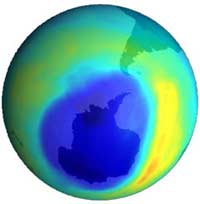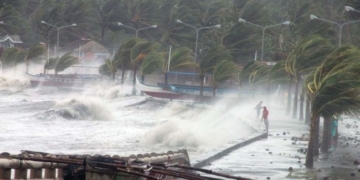 The ozone hole over Antarctica is starting to shrink and could disappear by 2050, thanks to the reduction of chlorofluorocarbon (CFC) emissions and other gases that weaken the ozone layer, according to Japanese scientists.
The ozone hole over Antarctica is starting to shrink and could disappear by 2050, thanks to the reduction of chlorofluorocarbon (CFC) emissions and other gases that weaken the ozone layer, according to Japanese scientists.
This finding is based on research conducted by scientist Eiji Akiyoshi at the National Institute for Environmental Studies. According to a report published on the institute’s website, the ozone hole is currently at its largest size but has begun to gradually shrink since around 2020 and may completely disappear by 2050.
However, the study also indicates that the hole will not fully heal for many years to come due to the presence of numerous refrigerators and air conditioning systems, primarily located in the United States and Canada, which continue to emit ozone-depleting chemicals. Both countries are currently working to curb these substances through newer products.
Many satellites and ground monitoring stations have been tracking the ozone hole over Antarctica since its discovery in the 1980s. The amount of CFC emissions into the Earth’s atmosphere has been decreasing since the mid-1990s, thanks to international efforts to reduce emissions.
Earlier this month, American scientists also reported that the Earth’s ozone layer is gradually recovering following international efforts over the past 20 years.
TUONG VY


















































